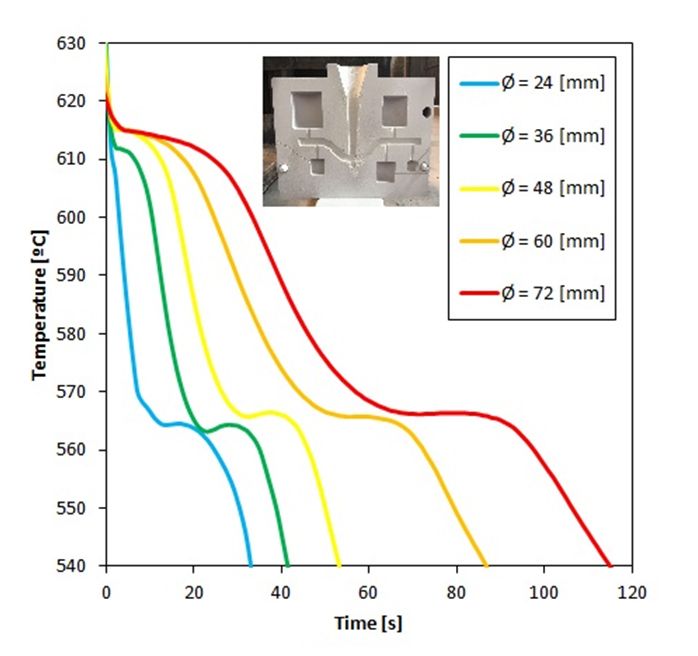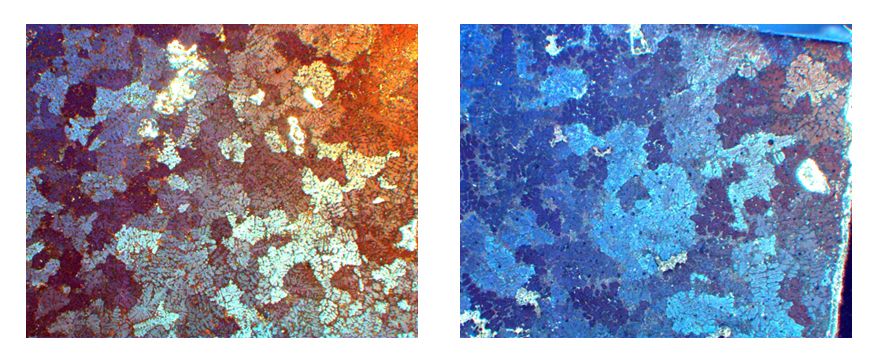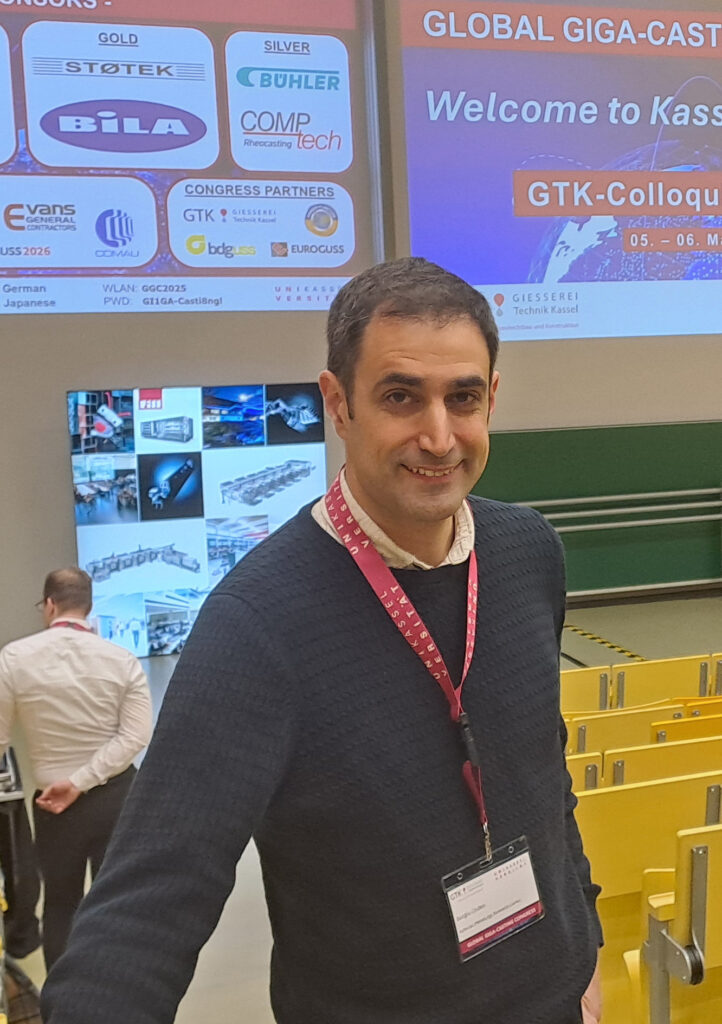A correlation between experimental and simulation results has been already achieved within the ALPRE R&D Project that is supported by the “Retos Colaboración” program (Reference RTC-2015-3822-4) from the Ministry of Economy, Industry and Competitiveness of the Spanish Government.
The microstructure of aluminum wheels and steering knuckles manufactured by low pressure die casting varies between different zones depending mainly on the following factors:
- Part geometry
- Solidification regime (mould cooling, solidification time, melt temperature, …)
- Modification rate and grain size refining potential
In order to predict the microstructure in real pieces we have designed a cylinder mould with different modulus adjusted to the thickness and SDAS (Secondary Dendritic Arm Spacing) of real parts. Besides, silicon modification rate and grain size refining potential have been evaluated by using Thermolan®-Al, developed in IK4-Azterlan. The effect of the thermal modulus in solidification curves of the cylinders and its relationship with grain refinement can be seen in the figures below.

Figure 1. Solidification curves with different cooling rates and test cylinder mould to analyze the evolution of the microstructure and grain size based on the solidification rate

Figure 2. Grain size of the smallest (left) and biggest module (right micrograph) samples
Also, different trials have been done varying the chemical composition, grain size and modification rate, allowing modeling the effect of these parameters. The project ends when these models are validated in both, wheels and steering knuckles, this will be carried out during the current year.



